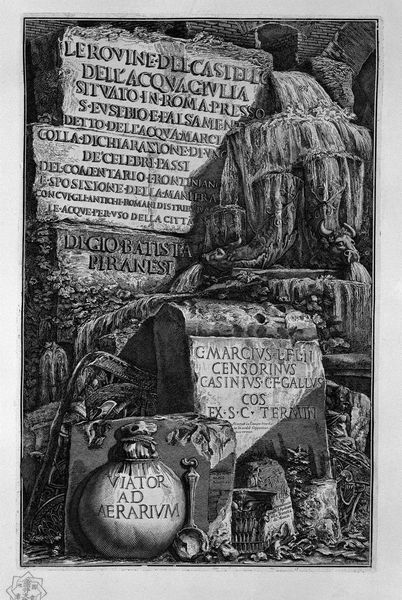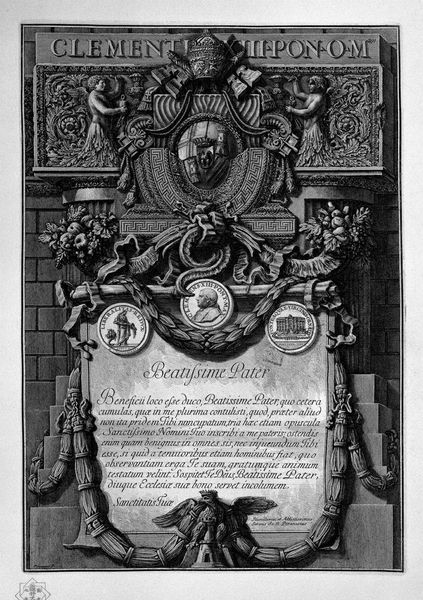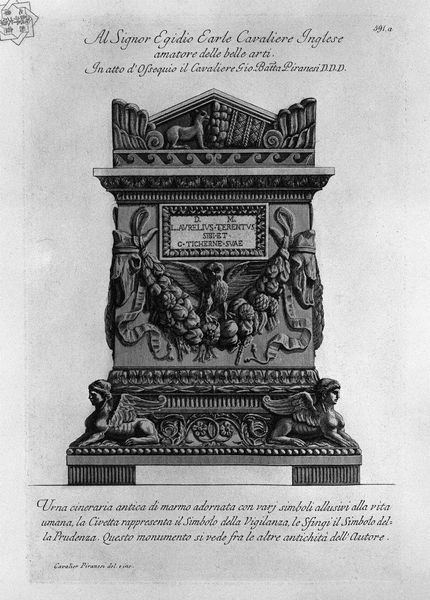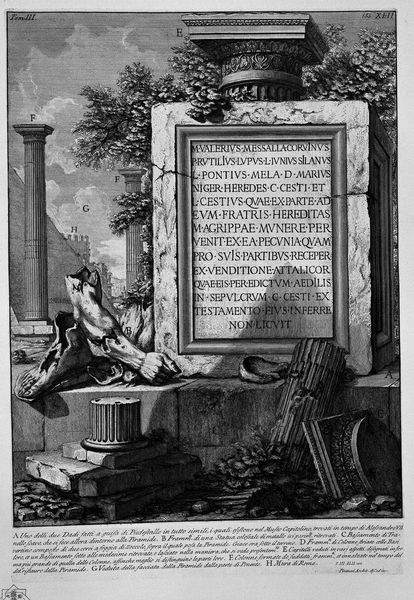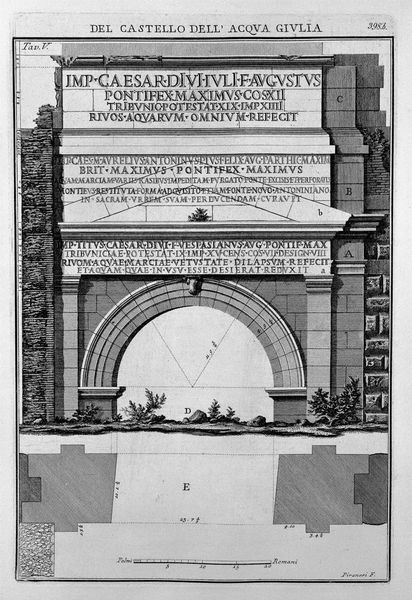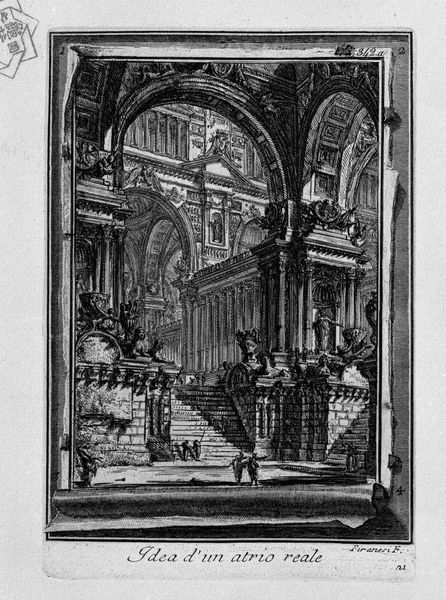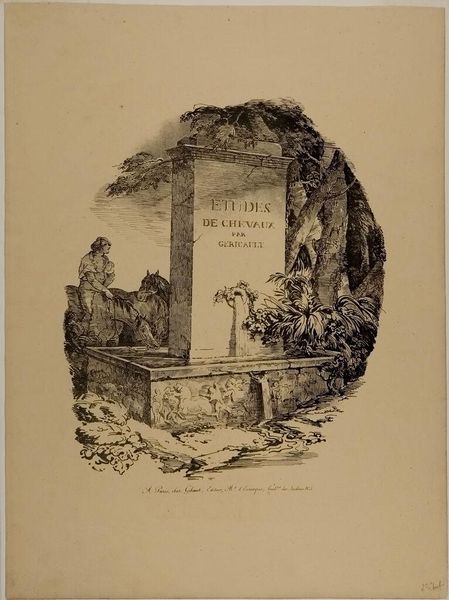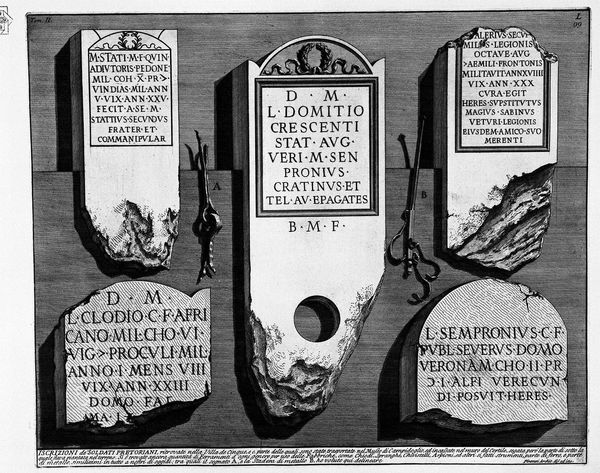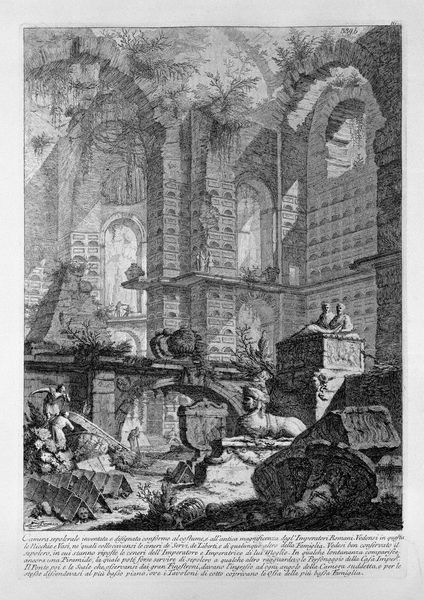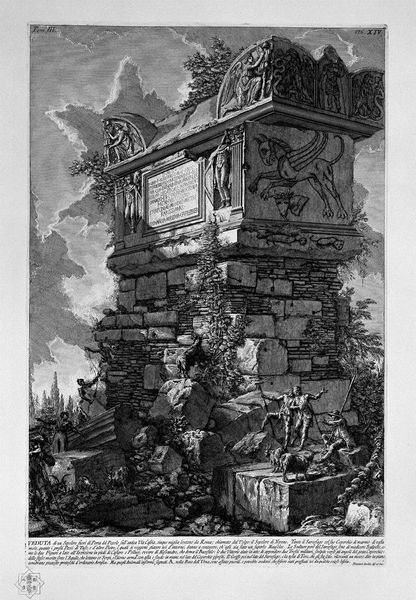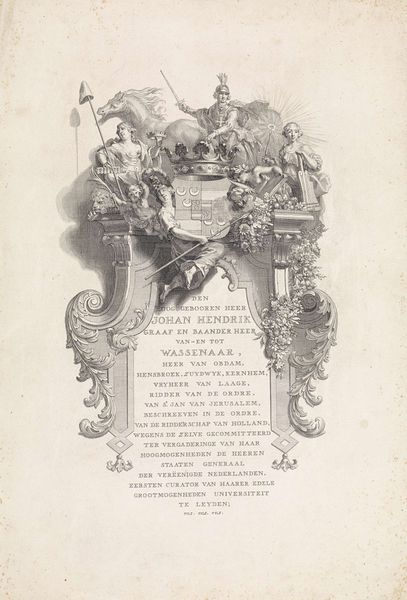
The Roman antiquities, t. 4, Plate I. Cover Page. Over a large cylindrical pillar decorated with a high relief with figures of sacrificing, the title in embossed letters.
0:00
0:00
carving, print, etching, sculpture, engraving, architecture
#
statue
#
carving
# print
#
etching
#
sculpture
#
form
#
romanesque
#
carved into stone
#
ancient-mediterranean
#
sculpture
#
carved
#
line
#
history-painting
#
engraving
#
architecture
Copyright: Public domain
Curator: The grand scale of this print immediately commands attention. It's like staring into a lost world. Editor: Exactly. What you're seeing here is the cover page from Volume IV of Giovanni Battista Piranesi’s "The Roman Antiquities," one of the volumes he released detailing the architectural wonders of ancient Rome. Curator: The way the lettering merges with the column’s architecture... It’s almost as if the words themselves are weighty stones, integral to the ruins. And the crumbling masonry! Do you feel that tension between decay and permanence? Editor: Absolutely. It highlights a prevailing fascination with the grandeur and, inevitably, the collapse of the Roman Empire that was typical of the eighteenth century. Piranesi wasn't just illustrating ruins; he was making a powerful statement about history itself. The heroic frieze along the top clashes magnificently with the creeping plantlife. Curator: He masterfully blends meticulous detail with atmospheric effects, doesn’t he? You see how the etching captures every little fissure in the stone, yet there’s an overall drama created through light and shadow, too? It gives a real theatrical feel. It draws me into thinking about how our fascination with antiquity has changed. How has this influenced the image of Rome across two centuries? Editor: Indeed, you perceive the intent behind the politics of imagery so incisively! And, to be honest, I see in Piranesi's obsessive detail a quiet rebellion, as if he’s whispering, "Remember this, before it all fades away.” And also the dark reminder that time devours all. Curator: Well, that was thought provoking and I hadn’t expected that Piranesi could make us feel time so concretely. Editor: Yes! What an amazing way to begin a study of antiquity!
Comments
No comments
Be the first to comment and join the conversation on the ultimate creative platform.
